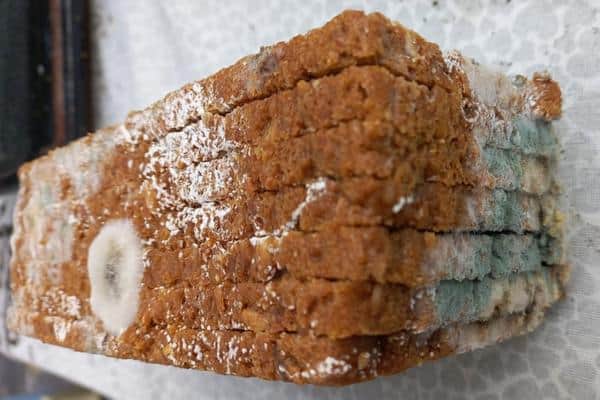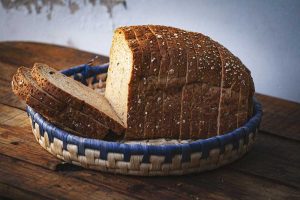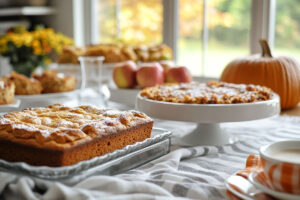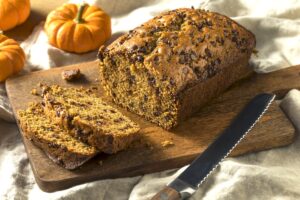This page may contain affiliate links. If you click and buy, we might get a small commission at no cost to you.
We all like to eat fresh bread, especially with jams and peanut butter, but seeing discoloration or even spots of mold in it is a big turn-off. You may be wondering, “Why does my bread mold so fast?” and want to know the causes of this quick growth of mold since understanding the underlying causes will help you increase the shelf life of your bread.
In this article, we’ll look at the primary reasons behind this and discuss several methods for keeping your loaves fresher for longer.
Why does my bread mold so fast?

Mold grows rapidly on bread because of many things, but the most common are moisture, oxygen, and temperature. Keeping bread in these ideal conditions and storing it incorrectly can speed up the growth of these fungi.
Key Takeaways:
- Mold needs oxygen, moisture, and a warm environment to thrive.
- It’s possible to prevent the growth of these fungi on bread by storing it in the freezer, paper bag, linen bag, or bread box.
- Make sure that you don’t store it near a moist area, in a plastic container, or anywhere that experiences major temperature changes.
What causes bread to mold so fast?
If you’re curious about why your bread is developing fuzzy, colored patches, it’s usually because of the presence of microscopic fungi. Mold can spoil your loaf and may also pose health risks if eaten. Several factors can contribute to the rapid formation of mold, including oxygen, moisture, and temperature.
1. Oxygen
Molds are classified as fungi, which are living organisms that can only flourish if there’s oxygen in their environment. Even if you keep the bread in an airtight container, mold may still grow on it. This is because most loaves are stored in bags that are filled with air. This is one of the reasons why you may find that some fungi have formed in the bread despite keeping them inside.
2. Moisture

Mold thrives in moist environments, which is why it’s attracted to areas with high levels of moisture. Moisture can be present in various substances, including food and environment, providing an ideal environment for mold to thrive and spread. So, if you store your loaf of bread in an area where there is a lot of moisture, there is a good risk that fungi will begin to grow on it.
3. Temperature
If you’ve done the math, you know that storing bread in the freezer reduces the likelihood of mold development significantly. This is because temperature is one of the factors that contribute to the growth of these fungi. Bread left at room temperature has a high risk of rapidly growing mold, as most of it thrives at temperatures between 32 and 77 degrees Fahrenheit.
Best place to store bread
Since many individuals don’t consume a whole loaf in a single sitting, it’s important to know the proper storage location for your bread to prevent it from becoming contaminated with mold.
1. Freezer
One of the most effective and well-known ways to prevent mold from developing is to completely freeze it, which is what freezers do best. This is the best kind of storage for you if you want to keep bread for a long time and don’t consume it all the time because the very low temperature fully hinders the growth of any fungi, bacteria, and even yeast.
To accomplish this, wrap your loaf before freezing it, and if you want to eat it, defrost it or bake it in the oven or microwave until it’s warm and ready to eat.
2. Brown paper bag

Avoiding plastic storage and instead storing your bread in a brown paper bag is one way to keep mold at bay. Paper bags help keep it fresh longer due to the air circulation they provide, and they don’t hold moisture, making mold growth difficult. Because bread in a paper bag might harden and go stale, it’s better to keep it in there if you’re going to eat it within a few days.
3. Linen bag
Another option for bread storage is a linen bag, which, like other breathable bags, will prevent it from becoming overly moist by allowing air to circulate around it. This is a great method for preventing the loaf from drying out and becoming moldy. You can only keep the bread here for a few days, but it’s still better than most other options for preventing mold growth.
4. Bread box
A bread box is a container that’s designed specifically to store bread in an airtight environment to maintain its quality. Since it also has good circulation, which prevents moisture from building up inside, having this in your home will be one of the best investments you can make if you’re a bread lover because it’ll allow you to keep it fresh for longer.
How about the fridge?

Many people ask if it’s also a good idea to store bread in the fridge, but doing so is one of the most common examples of bad bread storage practices. Although it keeps mold at bay, storing them in the fridge rather than freezing them causes moisture to drain and dries the bread out, causing it to go stale and taste bad.
Avoid doing these to keep bread from molding
- You shouldn’t put it in a plastic container because the plastic might collect moisture inside, and that’s exactly the kind of environment that these fungi need to grow and thrive in.
- It isn’t a good idea to leave it on the counter, especially close to damp places such as the kitchen. This can accelerate the growth of mold.
- Don’t store your bread in an area that experiences drastic fluctuations in temperature because doing so might cause it to become moist or even wet, creating an environment that’s ideal for the development of mold.
Final thoughts
Bread can develop mold quickly for a number of reasons, some of which include the amount of moisture it contains, the temperature, and oxygen in the air. You can prevent your bread from getting contaminated with these fungi by storing it properly and keeping it away from these factors.



